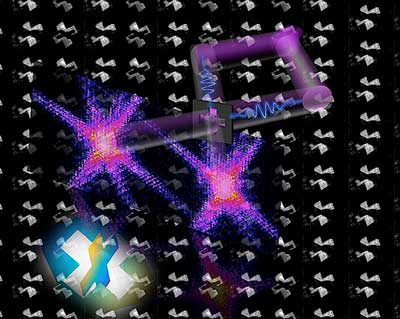| Apr 16, 2019 | |
New method to create ultrafast 3D images of nanostructures(Nanowerk News) Lensless microscopy with X-rays, or coherent diffractive imaging, is a promising approach. It allows researchers to analyse complex three-dimensional structures, which frequently exist in nature, from a dynamic perspective. Whilst two-dimensional images can already be generated quickly and in an efficient manner, creating 3D images still presents a challenge. |
|
| Generally, three-dimensional images of an object are computed from hundreds of individual images. This takes a significant amount of time, as well as large amounts of data and high radiation values. | |
| A team of researchers from Leibniz University Hannover and other universities has now succeeded in accelerating this process considerably. | |
| The researchers developed a method in which two images of an object can be taken from two different directions using a single laser pulse. The images are then combined to form a spatial image – similar to the human brain forming a stereo image from two slightly different images of both eyes (Nature Photonics, "Computed stereo lensless X-ray imaging"). | |
 |
|
| Protein structures of viruses can be analysed much faster. (Image: Leibniz Universität Hannover) | |
| The method of computer-assisted stereoscopic vision is already used in the fields of machine vision and robotics. Now researchers have used the method in X-ray imaging for the first time. | |
| “Our method enables 3D reconstructions on a nanometric scale using a single image which consists of two images from two different perspectives”, says Professor Milutin Kovacev from the Institute of Quantum Optics at Leibniz University Hannover, who is one of the co-authors of the study. | |
| According to the authors, the method will have a significant impact on 3D structural imaging of individual macromolecules and could be used in biology, medicine, as well as in the industry. For example, the protein structure of a virus could be analysed faster and with very little effort. The protein structure has an immense influence on the function and behaviour of a virus and plays a decisive role in medical diagnoses. |
| Source: Leibniz Universität Hannover | |
|
Subscribe to a free copy of one of our daily Nanowerk Newsletter Email Digests with a compilation of all of the day's news. |
